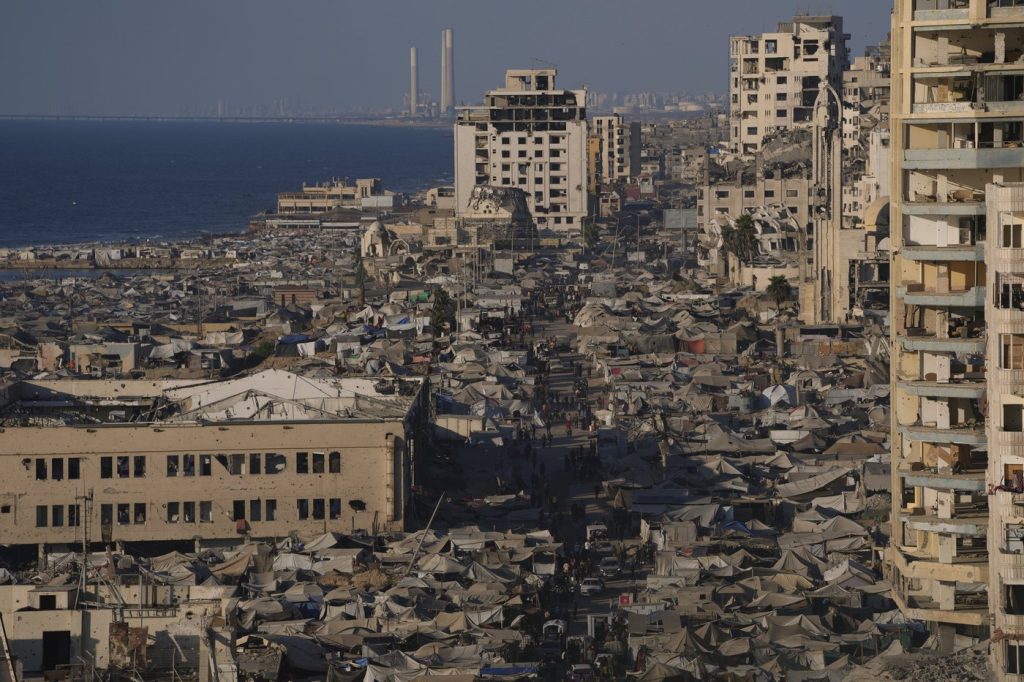DEIR AL-BALAH, Gaza Strip (AP) As artillery and bombs intensify around Gaza City, which is already declared a combat zone by Israel, fear grips the Palestinians residing in the area. Uncertainty surrounds their decisions on whether to flee or stay amidst threats of heavy fighting as Israel ramps up its operations against Hamas. The situation is particularly dire as many families, having returned to the city after initial evacuations, now face the possibility of leaving for good.
With Israeli bulldozers demolishing structures in neighborhoods and plans to forcibly relocate Palestinians being discussed by Israeli leaders, residents are left grappling with a life-or-death dilemma. The financial burden of moving, costing thousands of dollars, and the challenge of finding space in the already overcrowded south reflects the impossible choices facing the residents of Gaza City. Mohammed Alkurdi, a sheltering resident, poignantly states, “It’s like you decide whether to live or die. It’s very simple like that.”
Since Israel announced the area as a combat zone on Friday, only about 14,840 out of nearly 1 million Palestinians estimated by the U.N. to be in Gaza City have evacuated, mostly heading south. A smaller number, around 2,200, have relocated within Gaza City due to ongoing attacks. Alkurdi describes the terrifying sounds of destruction surrounding him, with entire neighborhoods like Zeitoun being reduced to rubble, as seen in satellite images from early September.
Many residents who returned to Gaza City during a ceasefire in January now face the grim reality of having their homes destroyed. Alkurdi, who lost his home, speaks about the drastic change since the last evacuation, noting the absence of previously safe areas such as Rafah and Khan Younis, which are now severely damaged or destroyed. He, like others, acknowledges that leaving this time would signify an end to their lives in Gaza.
Meanwhile, for others like medical workers and those with elderly or sick family members, escaping Gaza City is a near impossibility. Norhan Almuzaini expresses her struggle with the decision, highlighting the challenges presented by her unwell family members and the burden of relocation. Amal Seyam, the general director of the Women’s Affairs Center, illustrates her commitment to stay as long as there are women in need, despite the continual threats surrounding her.
The conditions for those who manage to leave Gaza City are equally dire. The influx of displaced individuals has led to overcrowded tent camps, soaring prices, and increased competition for basic necessities. Iman El-Naya describes chaotic living conditions in Khan Younis where hygiene is a serious issue and acquiring essentials like water has become a daily struggle. Shorouk Abu Eid, who fled months ago, laments the lack of privacy and the overwhelming congestion that has resulted from the influx of people.
The ever-growing crowd has caused tension as resources become scarcer. Jamal Abu Reily voices concerns about the inadequate facilities for the incoming displaced population, questioning how the area can accommodate so many. The cycle of displacement continues to haunt Gaza's residents, pushing families into uncertain futures.










